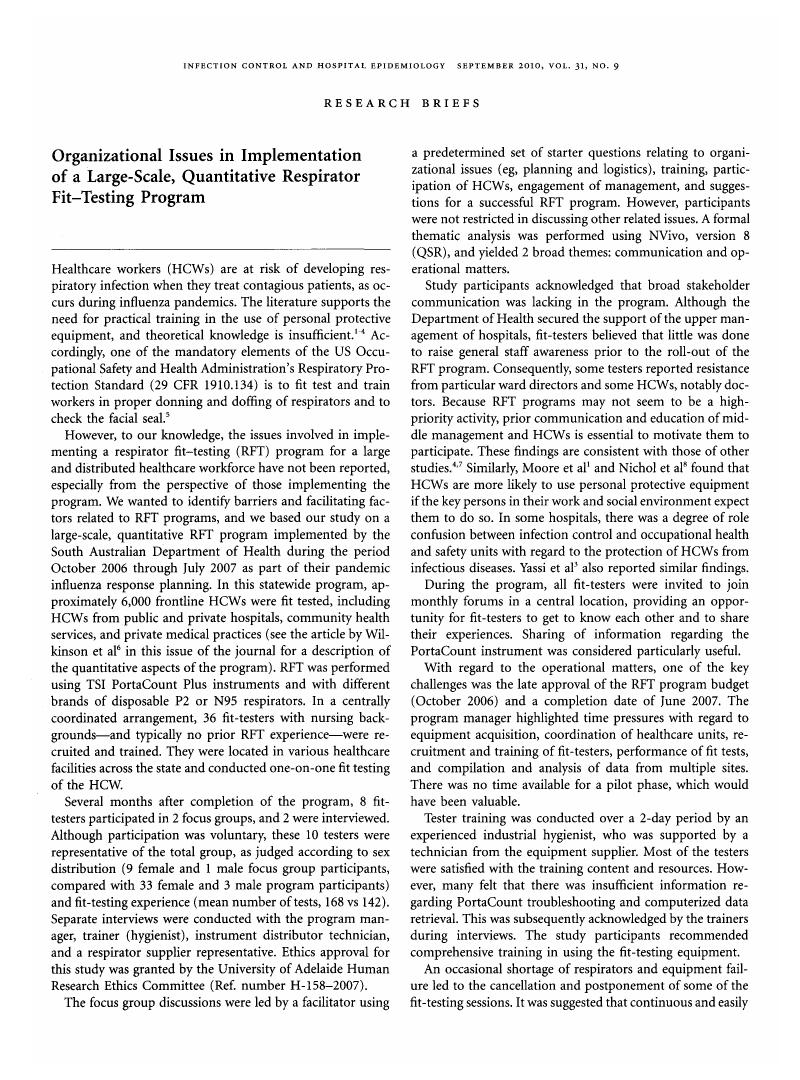Crossref Citations
This article has been cited by the following publications. This list is generated based on data provided by Crossref.
Wilkinson, Irene J.
Pisaniello, Dino
Ahmad, Junaid
and
Edwards, Suzanne
2010.
Evaluation of a Large-Scale Quantitative Respirator-Fit Testing Program for Healthcare Workers: Survey Results.
Infection Control & Hospital Epidemiology,
Vol. 31,
Issue. 9,
p.
918.
Locatelli, Sara M.
LaVela, Sherri L.
and
Gosch, Megan
2014.
Health Care Workers' Reported Discomfort While Wearing Filtering Face-Piece Respirators.
Workplace Health & Safety,
Vol. 62,
Issue. 9,
p.
362.
Han, Don-Hee
2015.
Usage of Filtering-facepiece Masks for Healthcare Workers and Importance of Fit Testing.
Journal of Korean Society of Occupational and Environmental Hygiene,
Vol. 25,
Issue. 3,
p.
245.
Jeon, Eun-Jin
Lee, Ah-lam
Jung, Young-jae
Kim, Hee-Eun
and
You, Hee-Cheon
2023.
The Measurement of Korean Face Skin Rigidity for a Robotic Headform of Respiratory Protective Device Testing.
Fashion & Textile Research Journal,
Vol. 25,
Issue. 2,
p.
248.





